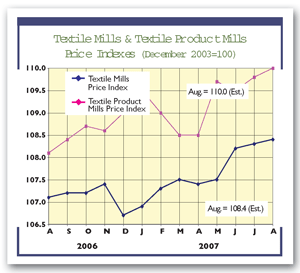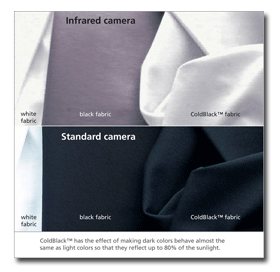T
he latest earnings and margin reports haven’t been all that positive — with recently
released government numbers covering the second quarter of the year lagging considerably behind
comparable 2006 readings. After-tax mill profits during the April-June period, for example, come to
only $247 million — considerably under the $434 million figure of a year earlier. Margins also fell
during the three-month period — from 3.5 percent a year ago to only 2.2 percent at last report.
The big question, of course, is, What happens over the quarters and years immediately ahead?
One cautiously optimistic answer comes from new predictions by Global Insight — a major economic
consulting firm. Analysts at this prestigious group, for example, are still betting that the totals
won’t fall that much from 2006 levels. As of now, their rough measure of profits — mill sales less
both material and labor costs — is expected to drop only about 8 percent for all of the current
year. Moreover, in 2008 the decline is projected to decelerate to only near 4 percent — with a
leveling off or no-change reading anticipated for 2009. The group’s profit projections for the
apparel industry are even more encouraging — with little or no change in bottom-line performance
seen for this year, 2008 and 2009.

Some Other Positive Signs
There are also some indications that the recent drop-off in mill activity may be slowing
down. Specifically, overall domestic output, as measured by Uncle Sam’s index of mill production,
hasn’t been all that bad over recent months. To be sure, year-on-year comparisons still suggest
about an 8-percent decline. But the fall-off since this past December has only been around 2
percent or so. This flattening-out tendency is also confirmed by another widely monitored
government series: industry shipments. Here too, declines have tended to flatten out after a rather
sharp late-2006 decline. All this, in turn, suggests that when the dust finally settles on 2007,
the average decline in mill activity isn’t likely to be all that precipitous.
Analysts at Global Insight also back
Textile World
up on this score with their new 2007 sales forecast calling for only a 6- to 7-percent
decline in inflation-adjusted shipments for the year as a whole. Still another hopeful sign: Mill
inventories have been trending down of late. Thus, inventory/sales ratios for both basic mill
products and more highly fabricated mill products have dropped well below year-ago levels. More
important, they are probably as low as they can go. This, in turn, suggests that new orders, as
they come in this fall and winter, will more than likely be filled by new production rather than
from any further inventory drawdown.
All Eyes Still On China
Sino/US trade problems, meantime, continue to simmer, with our aggregate trade deficit with
Beijing threatening to hit the $200 billion mark this year — far above 2006’s already huge $177
billion figure. Zero in on textiles and apparel, and our year-to-date incoming shipments from China
are running better than 20 percent ahead of comparable 2006 levels — and well above the 11-percent
gain noted for all of last year.
But here, too, some positive signs may be creeping into the picture. Beijing, for example,
has been moving to slow outgoing shipments by cutting back on subsidies that eliminate or whittle
down rebates on its value-added tax for thousands of low-tech items. Other things being equal, that
could result in rising Chinese prices. Moreover, there are a lot of other factors that could
eventually make for higher Chinese tags. For one, there are rising wages, spurred on by a new
Beijing employment law that is likely to boost pay for low-end, labor-intensive manufacturing
industries.
That nation’s burgeoning pollution problem can’t be ignored either. Much of this is centered
in textiles and apparel, which, according to experts, is one of China’s dirtiest manufacturing
sectors. In addition to heavy metals and various carcinogens contained in fabric dyes, these
products often contain starch, which can suck all of the oxygen out of a river, turning it into a
stagnant sludge.
An added pressure there is coming from US companies like Liz Claiborne, who are making it
clear that they do not want to be associated with suppliers that pollute Chinese waterways. In any
event, it’s becoming increasingly clear that a lot of money will be needed to fix these problems.
October 9, 2007






